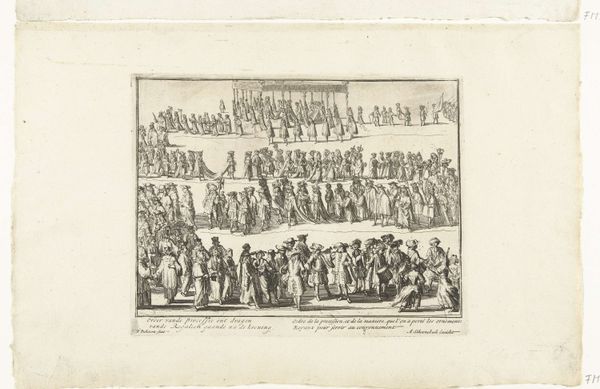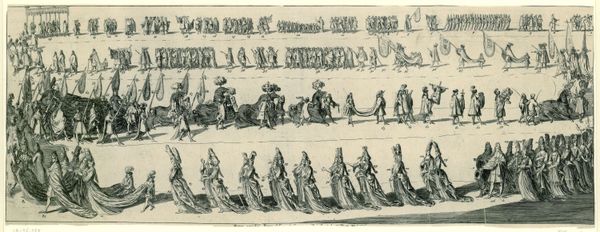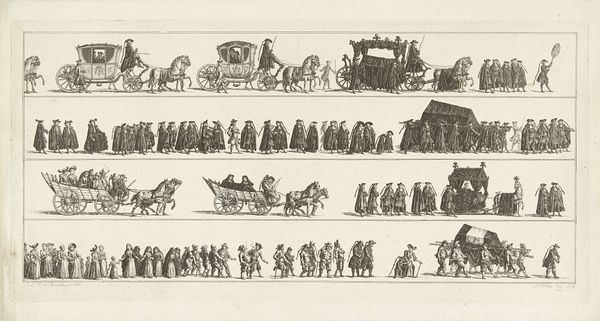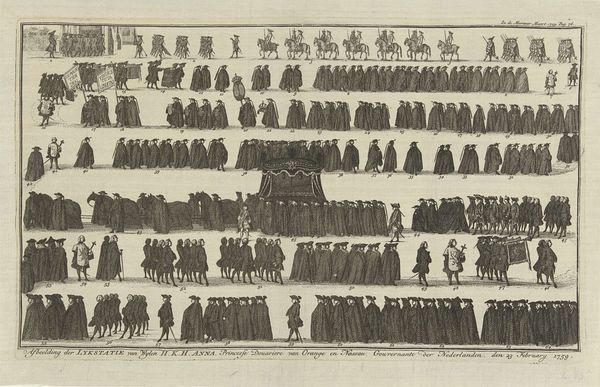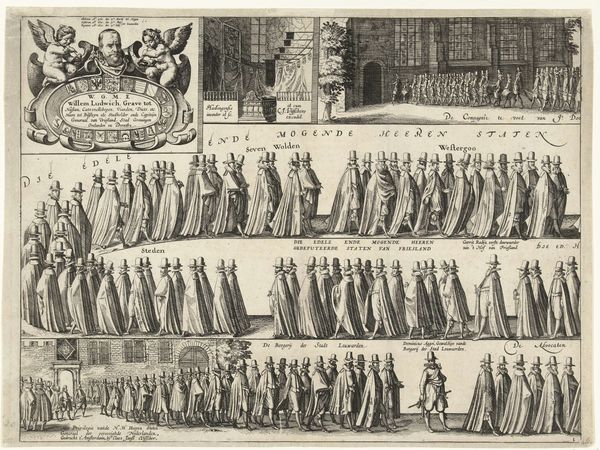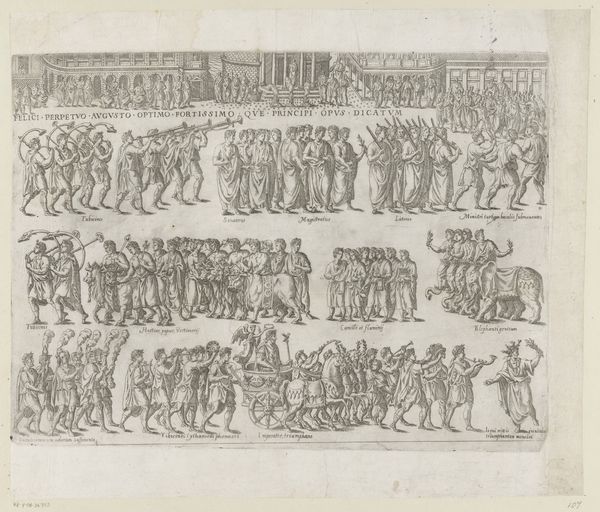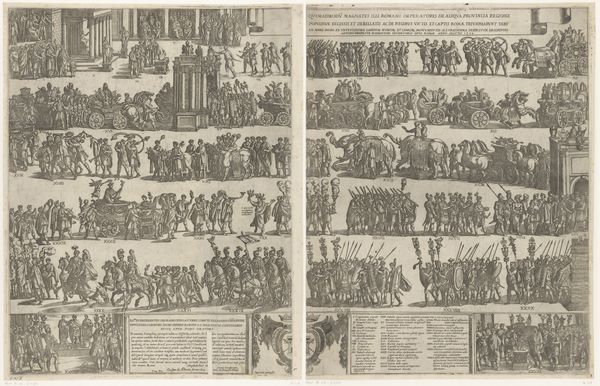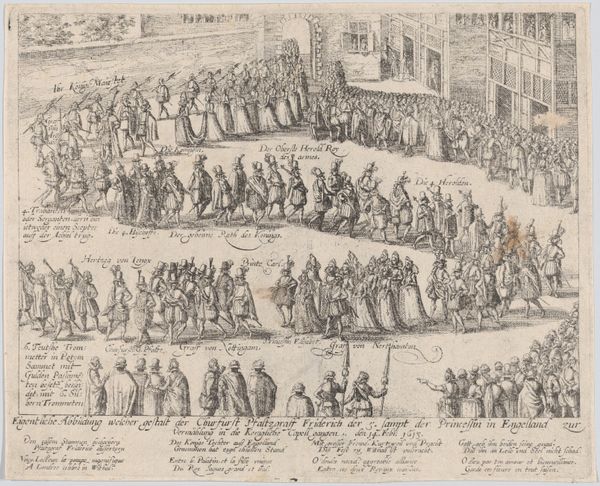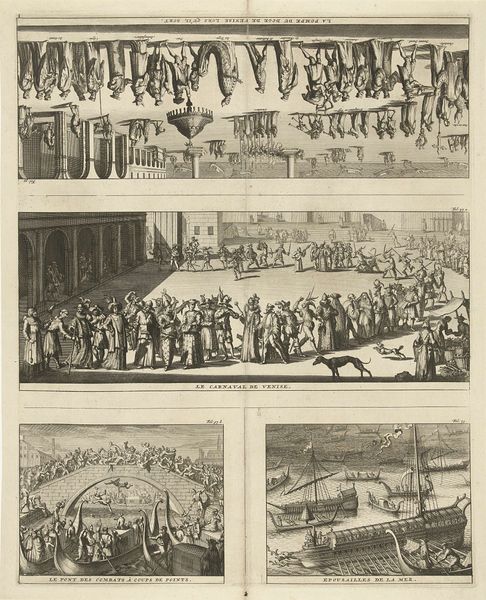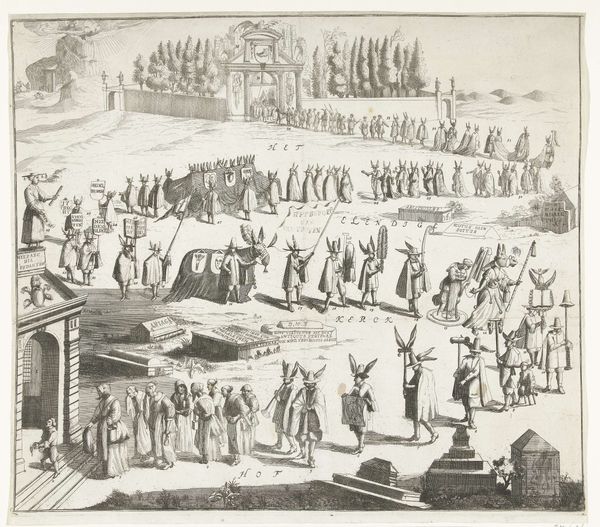
drawing, print, engraving
#
drawing
#
baroque
#
pen drawing
# print
#
landscape
#
engraving
Dimensions: height 220 mm, width 985 mm
Copyright: Rijks Museum: Open Domain
Curator: Here we have, depicted in precise engraving, a historical rendering of the funeral procession of William IV in 1752. The artist meticulously captures the somber event, laying bare the rituals of power and the performance of grief in the Dutch Republic. Editor: Wow, it looks like a swirling, endless loop of tiny, hooded figures! I'm immediately struck by the sheer density and repetition of the figures. It’s almost dizzying. Like a solemn vortex! Curator: Precisely, that looping arrangement! The continuous, circular parade speaks volumes about the social hierarchy. Every class, role and representation, unified in their observance. This piece becomes a map, quite literally, of societal strata at the time. How each group occupies space. How death becomes this visual expression of national identity. Editor: Absolutely, it’s like watching a silent play unfold, but there's something really captivating in the uniformity, the lack of individuality in those small figures. They're lost within something much bigger. Is that supposed to mirror their own loss of their leader? Curator: The suppression of individual emotion for the sake of communal mourning, of collective power. Notice too the presence of military figures, the representatives of various guilds... each section has a designated position in the public mourning. Who has access, and where within the performance of statecraft they can exist. Editor: It really invites a kind of melancholic introspection... I mean, we're all headed that way, right? Dust to dust? Ha! But also, thinking about it, the pen drawing and engraving techniques sort of add to that sense of history. These old media emphasize how the work is acting like a historic document itself! Curator: And that it is. We gain insight not merely into Willem IV's death, but on questions about inherited power. The tension between public duty and private emotion within the ruling class becomes something of a stage upon which politics are visualized. The image freezes a key moment, as much a portrait of Willem's legacy, as of the society which reshaped itself following his death. Editor: Seeing it that way changes everything. So, so much more than just little hooded figures in a loop. Makes you realize how something old can actually be timeless, really. Curator: Agreed. It prompts essential conversations on history, loss, legacy.
Comments
No comments
Be the first to comment and join the conversation on the ultimate creative platform.


